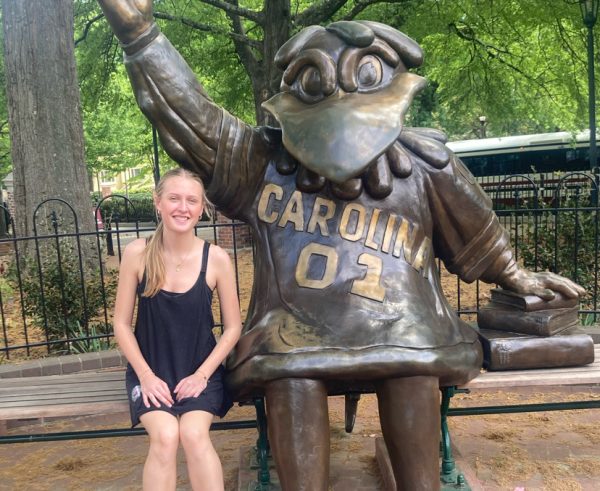A Drop a Day Keeps the Doctor Away
Thursday, February 26, was the NHS Blood Drive which happens twice a year here in the gym at WHB High School. Only students aged 16 with a permission slip and 17+ without a permission slip could donate. The need for blood donors is high lately so this Blood Drive was a great chance to give to people in need.
This year, approximately 120 students donated blood, bringing the number of pints collected to 88. Along with the age restrictions, students had to be at least 110 pounds to donate, reasons having to do with physical ability. Every year, the school holds 2 blood drives. One in November and one in February. To organize the blood drives, a representative from Long Island Blood meets with National Honor Society students. Then, the students must be trained in order to be active counters in the blood drive. The students advertise the blood drive, and finally emails are sent to donors to notify them that there will be a blood drive.
To prepare yourself for donating blood, you should eat a healthy breakfast and make sure to drink plenty of water the morning of the drive. Eating iron rich foods such as greens and beans, aid in restoring the blood donated. According to Ms. Demchak, National Honor Society Advisor, “the best time to give blood is at the beginning of the day or any time in the morning, so you can be the first one in and out. The blood drive is generally very slow until period 5.”
There are many benefits to donating blood. Firstly, one pint of blood could save up to three lives. Many people say that if someone in their family needed blood they would donate it, but most of the time the need for blood is too immediate and short notice, therefore they imagine that it was one of their family members who needed the blood, which makes the process easier. Ms. Demchak says that she will count donating blood as community service, which is an additional incentive to donate. She stated that “if a student is hesitant to donate, they can always donate with a friend to ease the nerves.”
Khai Henderson, a junior who donated, explained the process. “You have to fill out a questionnaire about your medical history and where you may have traveled in the world over different time periods,” Henderson said. “Then, you meet with a nurse to take your blood pressure and check iron levels.” Mrs. Demarco explained, “If you have donated within the past 52 days, you are not eligible to donate blood. After you’re all cleared for donation, another nurse cleans the area you will be donating from and preps you for the “quick pinch.” Once your blood is flowing, you relax for 10 to 15 minutes and wait for all the vials to be filled up. When you are done you receive a bandage and are then escorted to an area to refuel, where you are given a small snack and some liquids.” Henderson claims “It wasn’t bad at all; the needle didn’t even hurt as much as I thought it would have, and it was more fun than scary.” Their reason for donating is to “overcome a fear of needles,” however this is just one reason people may donate. After the blood drive is over, the blood is sent to Long Island Blood Services, then sent out and tested to make sure it is usable, checking for (the absence of) factors such as illnesses.
The need for blood is constant and in high-demand. While it may be scary at first, the pay off of donating blood overpowers the fear. Students will feel good knowing you’ve helped change, and possibly save, a life.

Paige is a sophomore at Westhampton Beach High School. She is a writer for The Hurricane Eye, this 2014-2015 school year. Paige is a music lover and has...







